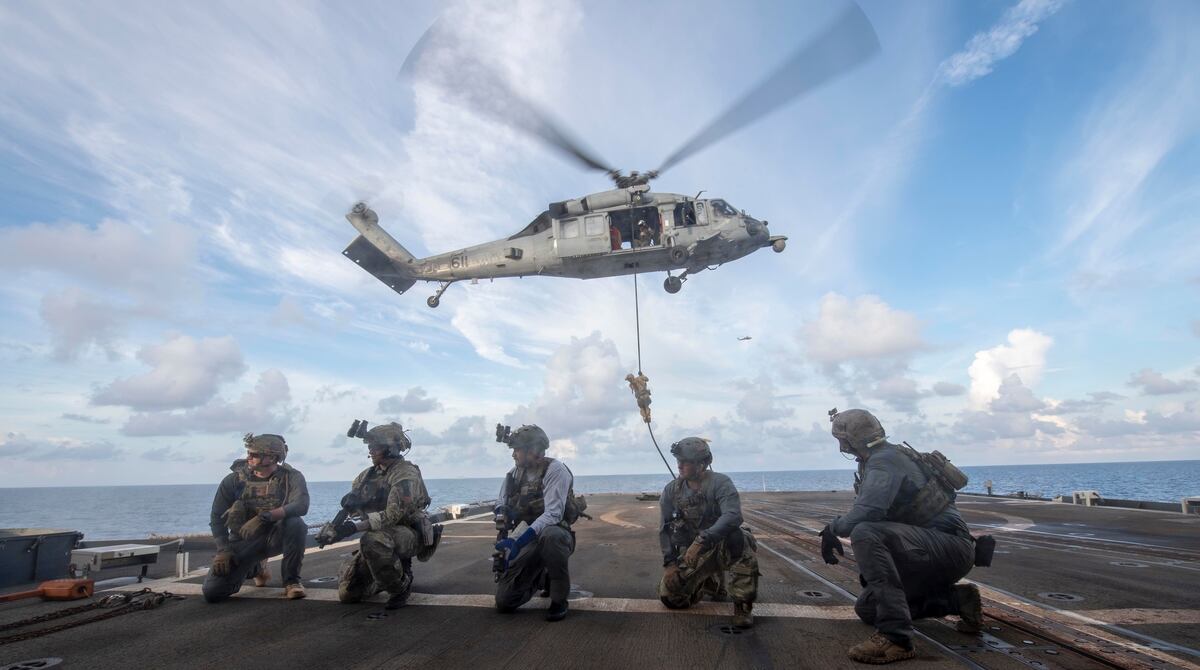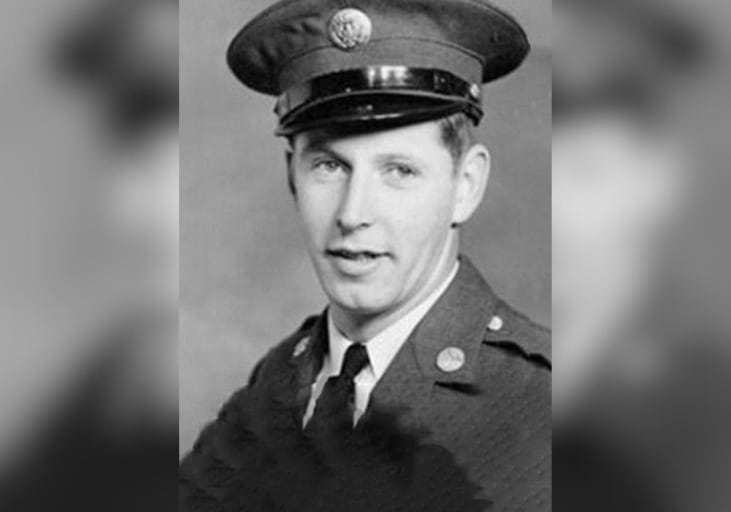The Navy’s explosive ordnance disposal community wants to shake up its operational tempo, a plan that could mean a longer training cycle but shorter deployments, two commodores told reporters at the Pentagon on Wednesday.
EOD is embracing the National Defense Strategy’s refocus on potential conflicts with countries like Russia and China. That doesn’t mean forgetting the lessons learned from nearly two decades running counter-insurgency operations, but it’s prodding leaders to create a more efficient way to train and deploy EOD sailors.
“The last 17 years of combat operations has been fast and furious, and in some cases, it wasn’t anyone’s fault that we didn’t do a full analysis – we just kept adding more and more,” said Capt. Oscar Rojas, the commanding officer of Explosive Ordnance Disposal Group 1 in San Diego.
To Rojas, redundant training has bogged down the cycle but an ongoing study slated to wrap up next year is taking a hard look at how EOD personnel prep for deployment and the amount of time it all takes to accomplish.
“As our platoons start from day one of the training cycle, by the time they’re done with the basic phase, they will be ready for major combat operations,” he said.
The advanced phase can then be dedicated to tightening up any deficiencies found in basic phase, potentially allowing more pre-deployment time at home.
And when sailors return home, officials hope they have more time to decompress.
Those reforms could mean a training cycle that stretches to 36 months, unlike today’s model featuring 24 months of training capped with a six-month deployment, Rojas said.
“Investing 24 months into a training cycle and only getting one six-month deployment is a horrible investment,” he said.
Elongating the training cycle and trimming some of the excessive or duplicated instruction could allow for two deployments ― shorter, maybe four or five months, but with less down time in between ― within roughly three years.
That still averages out to about three months deployed per year. But, because sailors don’t have to start fresh with the training cycle after each deployment, more time could be spent at home rather than in the field.
Navy leaders might make a few more tweaks, Rojas said, including revamping the leadership development career path. There is also the possibility of new special pays or other benefits for the community such as the Critical Skills Retention Bonus or advancing to vacancy opportunities.
“If there are vacancies for a certain pay grade, one of our sailors could apply for the job and get promoted because they are ready for that milestone,” Rojas said.
RELATED

There aren’t any immediate plans to grow the population of EOD sailors, but that might happen, too.
“We’re able to support essentially everybody who’s asking for EOD support, but if the Navy grows, our expectation is that we will grow with the Navy,” Capt. Rick Hayes, the commanding officer of Explosive Ordnance Disposal Group 2, told reporters.
What no one denies is that the National Defense Strategy is making EOD leaders look less at clearing roadside bombs in Afghanistan and more at how they might need to respond to enemies trying to deny access to international waters.
“We’re spending a lot more time up north, operating in that environment,” Hayes said, referring to a photo of EOD sailors training with Norwegian troops.
“We spent a lot of time in Iraq and Afghanistan with our Army and Marine Corps brethren. We’re spending a lot more time in the water right now.”
Meghann Myers is the Pentagon bureau chief at Military Times. She covers operations, policy, personnel, leadership and other issues affecting service members.





